Posts Tagged: Gordon Frankie
Where the Boys Are
The boys won't be back in town for awhile. But they will show up. Girls, too. Native pollinator specialist Robbin Thorp, emeritus professor of...
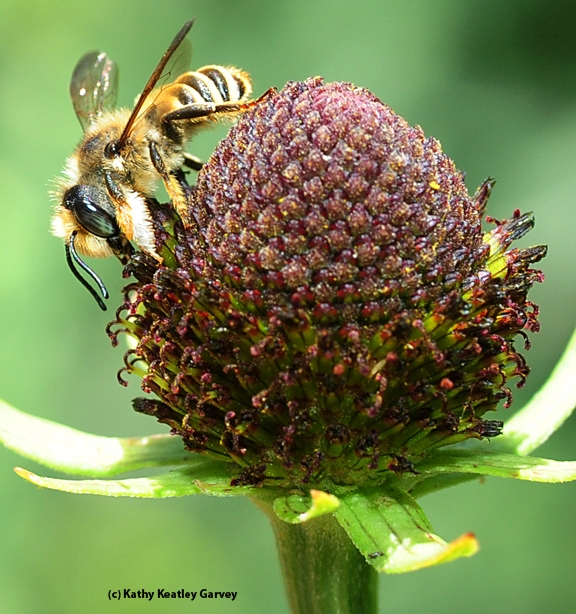
Male leafcutter bee, Megachile fidelis, as identified by Robbin Thorp, on coneflower. (Photo by Kathy Keatley Garvey)
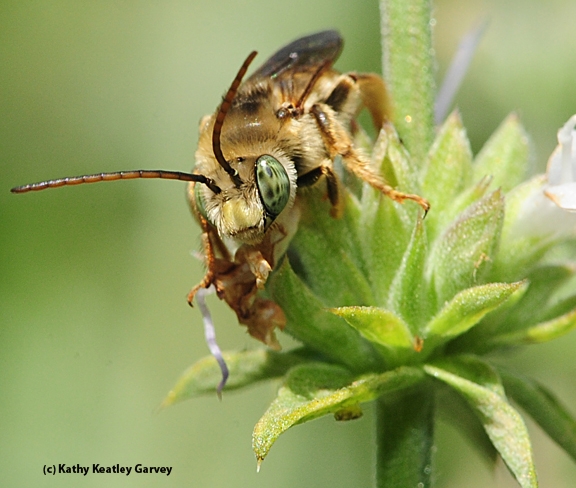
Male longhorned bee, Melissodes communis, as identified by Robbin Thorp. (Photo by Kathy Keatley Garvey)
Bumble Bee Book: The Wait Is Over
If you've been itching for that long--awaited book about North America's bumble bees, the itch and the wait are over. You can now...
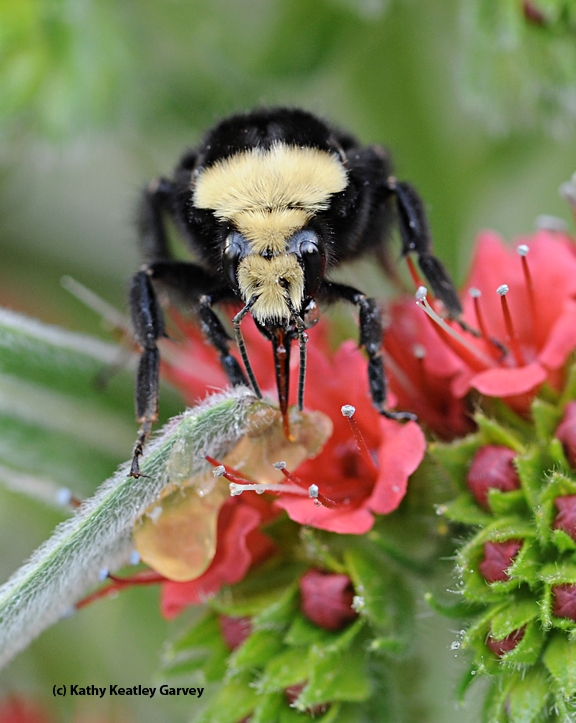
A yellow-faced bumble bee, Bombus vosnesenskii, on tower of jewels. (Photo by Kathy Keatley Garvey)
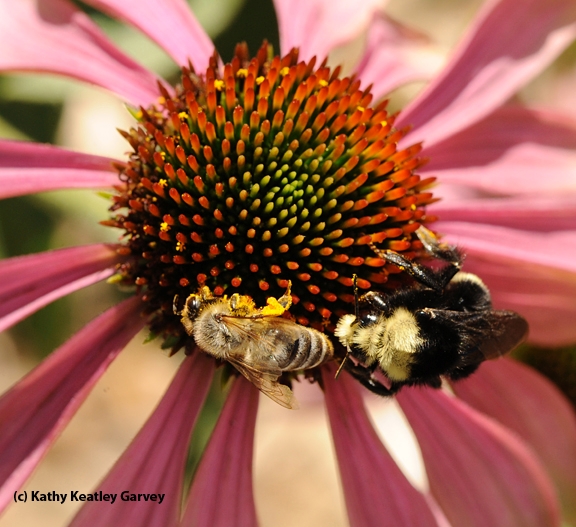
A honey bee and yellow-faced bumble bee sharing a coneflower. (Photo by Kathy Keatley Garvey)
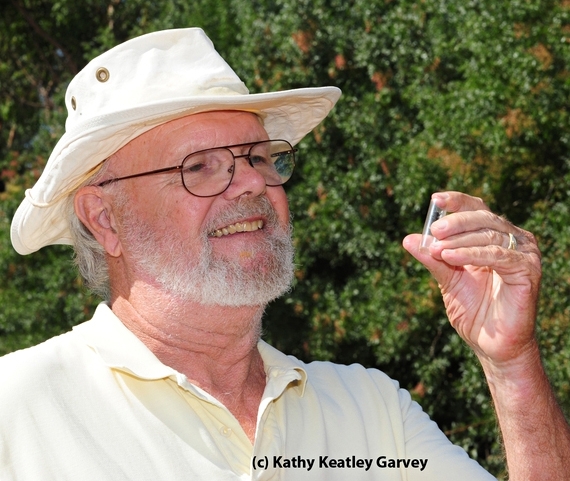
Native pollinator specialist Robbin Thorp, emeritus professor of entomology at UC Davis. (Photo by Kathy Keatley Garvey)
Just bee-cause
It's National Pollinator Week. Have you hugged your pollinators today, particularly the bees?
If you don't pay attention to the bees around you, you may think that every floral visitor is a honey bee (Apis mellifera) or a bumble bee (Bombus).
Not!
If you look closely, you'll see bee diversity: leafcutter bees, green metallic sweat bees, cuckoo bees, long-horned bees, carpenter bees, and squash bees, just to name a few.
Native pollinator specialist Robbin Thorp, UC Davis emeritus professor of entomology, has detected 80 different species of bees - and counting - in the Häagen-Dazs Honey Bee Haven on Bee Biology Road at UC Davis. The half-acre garden, planted in the fall of 2009, is located next to the Harry H. Laidlaw Jr. Honey Bee Research Facility. It's intended to be a year-around food source for the Laidlaw bees and other pollinators, to raise public awareness about the plight of bees, and to demonstrate what you can plant in your own garden.
"Of about 4,000 bee species known in the entire United States, about 1,600 have been recorded in California," according to Gordon Frankie of UC Berkeley, Robbin Thorp and their colleagues, in a must-read article in California Agriculture.
They point out: "...many types of urban residential gardens provide floral and nesting resources for the reproduction and survival of bees, especially a diversity of native bees. Habitat gardening for bees, using targeted ornamental plants, can predictably increase bee diversity and abundance, and provide clear pollination benefits."
Be sure to check out UC Berkeley's Urban Bee Gardens website that's described as "a practical guide to introducing the world’s most prolific pollinators into your garden." It's an educational treasure.
Bottom line: It's good to bee-aware, especially when research studies show that our pollinator population is declining worldwide.
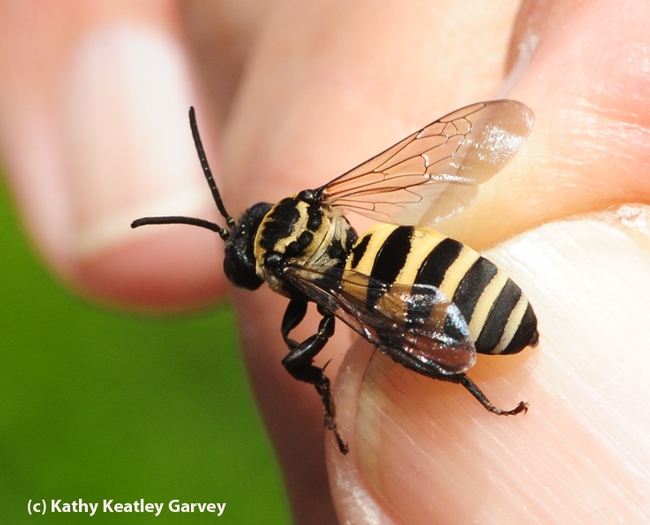
A male cuckoo bee, Triepeolus concavus, the cuckoo that is a cleptoparasite on Svastra, according to Robbin Thorp. (Photo by Kathy Keatley Garvey)
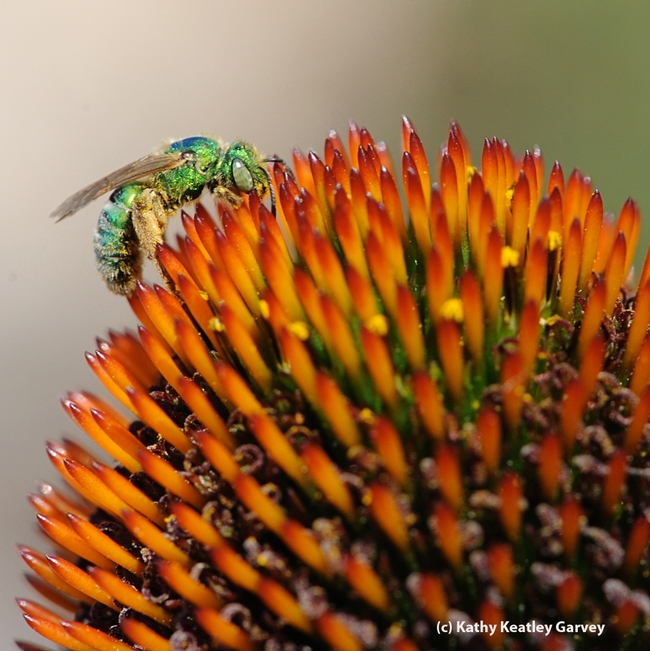
Female metallic green sweat bee, Agapostemon texanus. (Photo by Kathy Keatley Garvey)
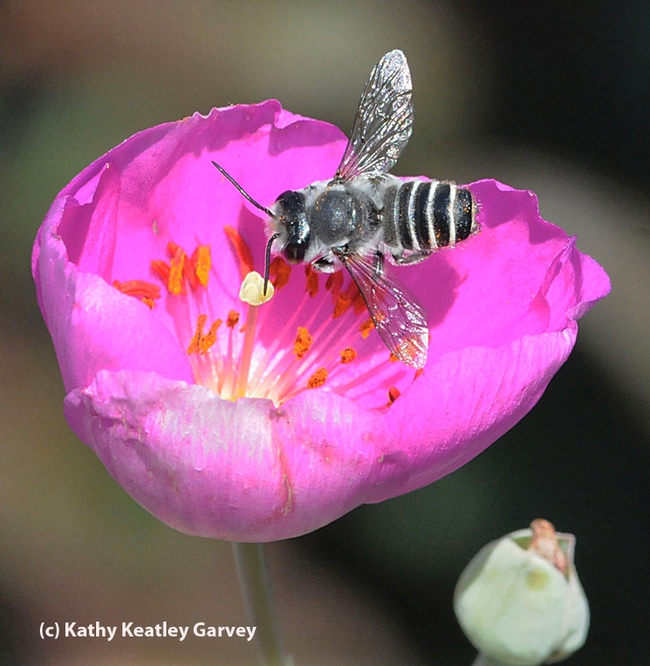
A male leafcutting bee, Megachile sp., on rock purslane. (Photo by Kathy Keatley Garvey)
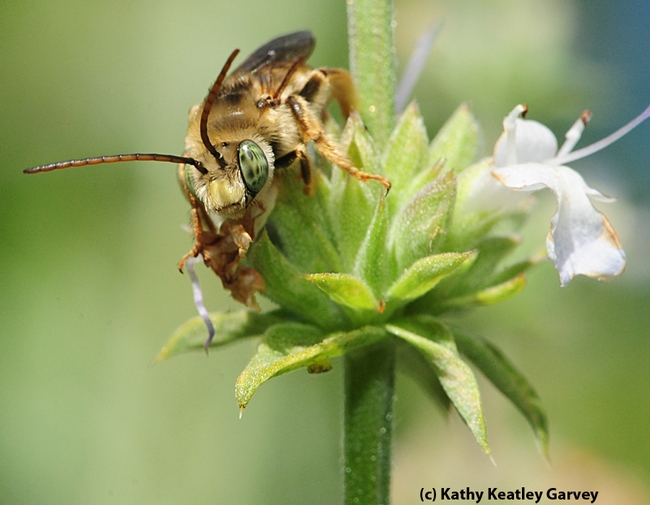
A male long-horned bee, Melissodes communis, on salvia. (Photo by Kathy Keatley Garvey)
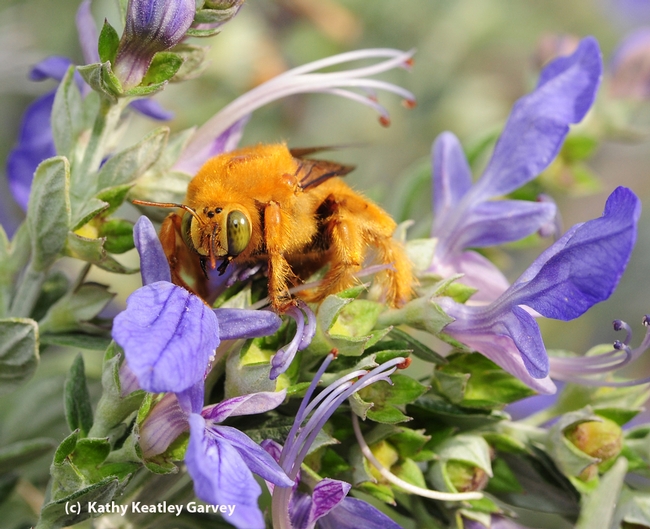
A male Valley carpenter bee, Xylocopa varipuncta. (Photo by Kathy Keatley Garvey)
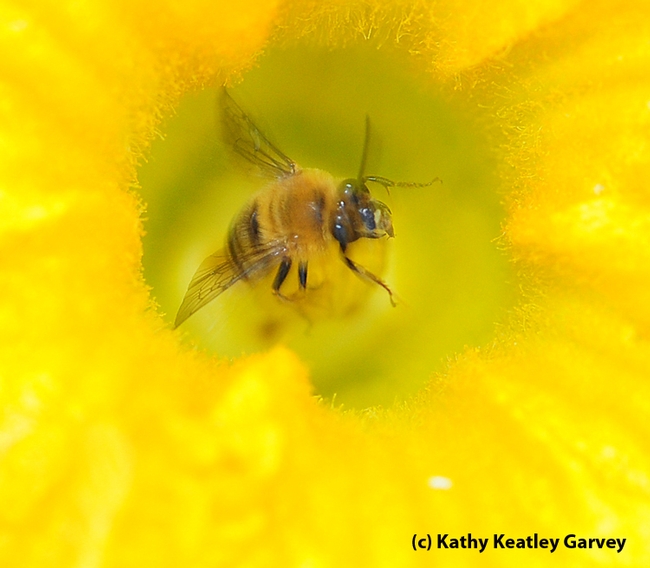
Male squash bee, Peponapis pruinosa. (Photo by Kathy Keatley Garvey)
Not Your Average Garden-Variety Calendar
It's not your average garden variety calendar.It's absolutely bee-utiful. Native bees reign supreme in “Garden Variety Native Bees of North...
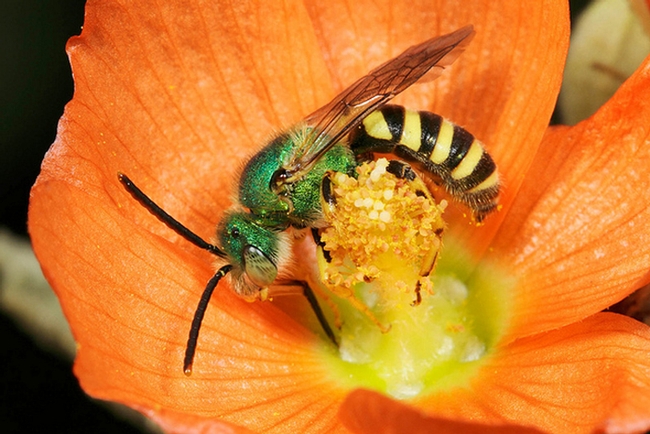
This is one of Rollin Coville's stunning photos of a male green sweat bee, Agapostemon. (Photo by Rollin Coville, used with permission),
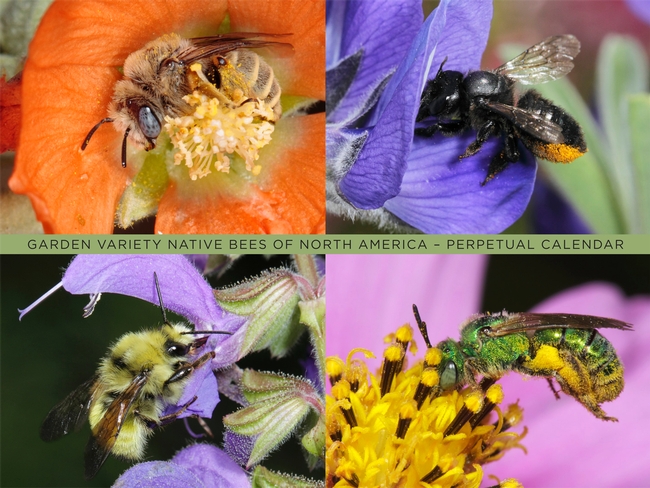
The cover of the calendar, "Garden Variety Native Bees of North America." (Photos by Rollin Coville)
The Buzz About Bees
It's good to see so much interest in bees.When folks think of bees, they usually think "honey bees." However, our European or western honey bee (Apis...
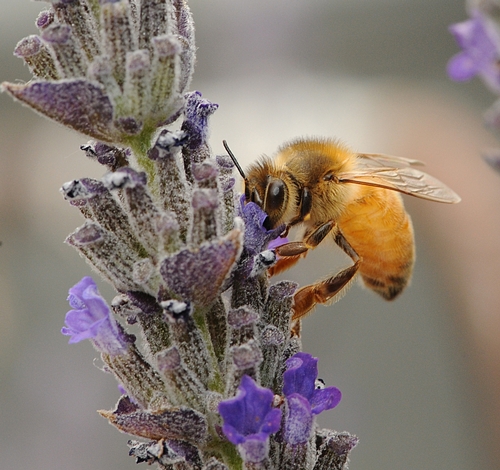
Honey Bee on Lavender

Yellow-Faced Bumble Bee

Carpenter Bee

